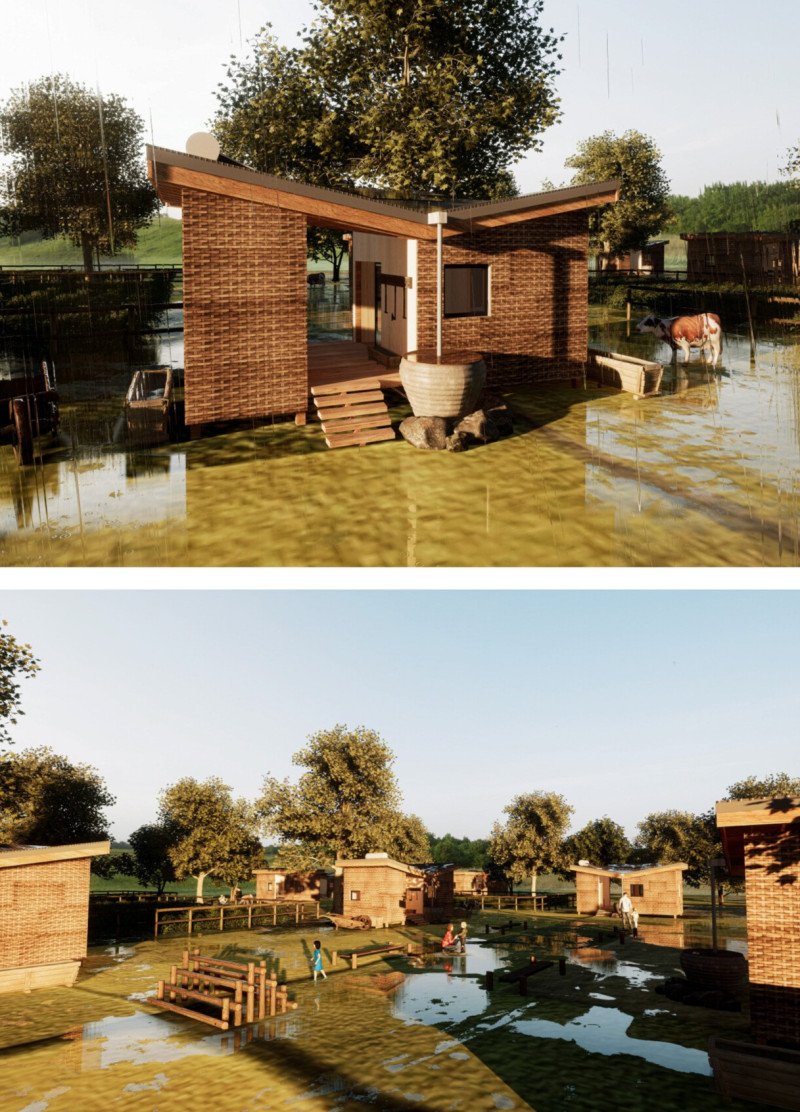5 key facts about this project
At its core, the project is designed to function as [insert primary function, such as a community center, educational facility, or residential building], providing essential services and spaces for its users. The careful layout promotes accessibility, ensuring that all areas are easily reachable, which is central to its function as a communal hub. Open spaces have been incorporated throughout the design, facilitating gatherings and fostering a sense of belonging among users.
Important architectural elements of the project include its distinctive roofline, which flows gracefully, allowing natural light to permeate interior spaces while framing views of the surrounding landscape. The façade utilizes a combination of materials, including sustainable timber, low-emissivity glass, and local stone, chosen not only for their structural qualities but also for their ability to resonate with the surrounding context. This choice of materials underscores the project’s commitment to sustainability, ensuring a minimal carbon footprint while promoting a visual language that is cohesive with its environment.
Vertical gardens integrated into the structure enhance both the aesthetic appeal and the environmental quality of the site, promoting biodiversity and improving air quality for occupants. The landscape design complements the architectural approach, with native plantings that require minimal maintenance while attracting local wildlife. This consideration transforms the area into a bridge between urban life and nature, reinforcing the project's role as a connector within the community.
Unique design approaches manifest in the project's commitment to passive design strategies. By optimizing orientation and utilizing thermal mass, the building minimizes the need for artificial heating and cooling, contributing to reduced energy consumption. The incorporation of rainwater harvesting systems further emphasizes the ecological awareness that permeates the design ethos.
Inside, the spatial organization prioritizes user experience, featuring flexible spaces that can adapt to various functions, from community events to individual reflection. Thoughtfully designed pathways and communal areas ensure flow and interaction, inviting occupants to engage with both the architecture and one another.
The project not only fulfills its intended functions but also stands as a testament to contemporary architectural ideas that prioritize environmental stewardship, community engagement, and user well-being. The delicate balance between functionality and aesthetic experience is resolutely achieved, providing an enriching environment that resonates with its users.
Those interested in further understanding the architectural plans, sections, and design elements of this project are encouraged to explore additional details to fully appreciate the nuance of this thoughtful undertaking in architecture and design. The careful execution and innovative ideas present a compelling study on how architecture can meaningfully enhance a community while respecting its surroundings.


























